Super Adventure Pals is an action-adventure platformer game with RPG elements. In the three months since the game’s original release it has been played over 4 million times, had front page features on popular portals, won daily and monthly awards on both Newgrounds and Kongregate, received Kong badges and been licensed to eight different sponsors.
Introduction
I’m Jay Armstrong, an indie developer. I grew up in Hong Kong but am now based in the UK. Super Adventure Pals was a collaborative effort between Julian Wilton and myself.
Super Adventure Pals is an action-adventure platformer game with RPG elements. You play as a young adventurer out to save his pet rock from the evil Mr B. But fear not, for you are not alone: by your side is your loyal pet and BFF, the Giraffe.
Together you cross a large free roaming landscape, helping out villagers, lawmen, talking snowmen, book worms, identity confused camels, notorious outlaws and nudist elderly gentlemen. Levels are filled with yetis, jellyfish toaster monsters, flying jelly bombs and giant cactuses (area dependant of course). You also face a number of platforming challenges such as wall jumping, exploding blokes and spikes, and you must make use of your yellow friend’s special abilities including his grappling hook neck and helicopter tongue.
Conception
I had relatively recently gone full time as an indie developer and decided that the best way to produce a lot of interesting content was to reach out and try and work with as many talented people as possible. I put out a post on a developer forum and a few days later had linked up with Julian. He was just completing his game Angry Bees and I knew straight away that we were on the same page.
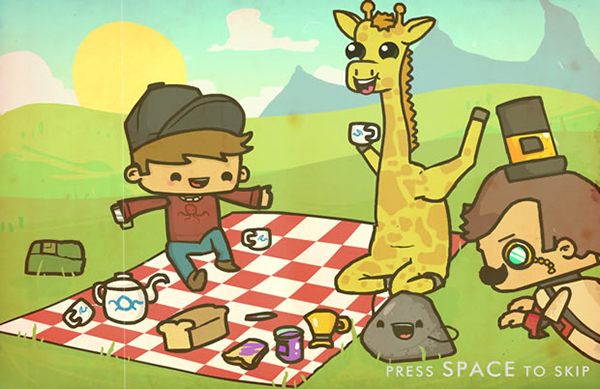
When discussing ideas, the two of us often come up with the same thing at exactly the same time – this can be a little weird, but it makes for a very fertile brainstorming process. It’s also so much easier to get to where you want to go if you are both pulling in the same direction.
At first, despite (or perhaps because of) our shared vision, we didn’t really know what we were creating. We knew we wanted to make a platform game, we knew we wanted it to be bright and colourful and we knew we wanted it to be fun. But we had no idea what it would end up as, or how it would be structured. We spent about two months building the engine, and getting combat, jumping and the scale of it all to feel ‘right’.
One of the first things we decided very early on was that you should have a pet or companion in the game. In fact, we didn’t have a use for the giraffe until about the third month and I think that at one stage we had entirely forgotten about him! I had previously made a game called Kit & The Octopod, which, featured a boy and his pet squid, and it was very clear that people really felt a connection to the smiling cephalopod. We both agreed that having a pet companion not only takes away the ‘loneliness’ that a single player game can have, but also creates an emotional connection between the player and characters as well as opening up many opportunities for unique gameplay mechanics.
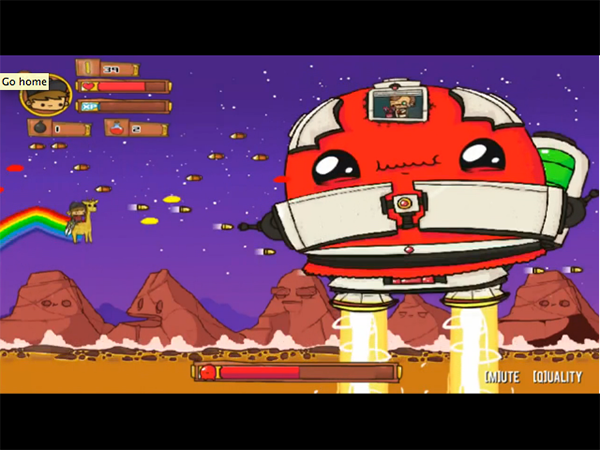
In the end, Super Adventure Pals came out of a whole melting pot of inspirations, influences and ideas. Julian and I had a desire to create something heart-warming, yet outlandish. The game features a plot so ridiculous that it becomes a wink to the audience, an in-joke between the player and developer. Games, particularly platformers, often come with a whole set of preconceptions and understandings that mean you are familiar with the format even before starting the first level. You know the aim and what to do and you feel comfortable with it. By giving the game such outlandish characters and plot it pushes our preconceived expectations in a way that I hope would make players laugh and add to the fun of it all.
Creation
To create Super Adventure Pals we prepared a standard size baking tray, laid in three parts platformer, an ounce of action-RPG, a sprinkling of rainbow-laser-shooting-giraffe, a healthy portion of ruby hunting and a whole heap of adventure. Then we just peppered to taste, placed it in a pre-heated oven and left it to simmer for four to six months.
Although that makes it sounds easy, cooking can be dangerous. Be sure never to pour water on an oil fire. For more information on kitchen safety, please review these guidelines.Development
At this stage, we were really on a rampage – we were adding in everything that we could imagine. It got to a point where if there was an idea in our head we put it in the game, with little or no forethought. We had come to a joint decision that this game would be the pinnacle of what we could achieve at that point in time. This led to a number of important decisions and ambitious design choices.
One of these was having the first boss fight at the very beginning of the game, which acted both as a tutorial, and an introduction to the story. Julian had seen a video which talked about the brilliant way that in Mega Man, by fighting and losing to the final boss at the beginning, you get a real sense that you have been on a journey and grown by the time you eventually beat him at the end of the game. It makes you truly believe that your victory has been a direct result of your efforts.
By sheer coincidence, this is the third time this video has been referred to on this site. – Editor
We also believe that the mark of good game design is to be able to explain as little as possible and have the player pick things up intuitively. We spent a long time simplifying controls, abilities and other interactions to make them as streamlined and as easy to pick up as possible. For example, when you first play, you are not told that you can level up, you don’t know there is a world map and you don’t know about unlocking abilities. In fact, these are never explicitly explained – the only text in the game is during conversations with the townspeople – instead everything is introduced in such a way that you can take to it almost immediately.
Level Design
I had built a platformer level editor for a game I was working on (and still haven’t completed!) before I met Julian and we used this as a basis for the gameplay. This turned out to work really well for a number of reasons.

Firstly, it created a fantastic way to create a lot of levels. Making a tile based (rather than art based) level meant that we could export them as two-dimensional arrays which we could save into a text file. This drastically reduced the size of the game file size and allowed us to generate a huge number of levels with relative ease.
The other added bonus was that the platforming elements and mechanics could be created alongside the levels, which ended up giving the game a really well balanced learning curve – completely unintentionally!
Designing that many levels definitely got tiresome and on a couple of occasions I would just draw shapes into the level editor and then manipulate whatever emerged into a playable level. This, surprisingly enough, often led to some interesting ideas.
Towns and Bosses
Towns are really, in my opinion the unsung heroes of the Super Adventure Pals experience. They were something that we had talked about, but not had any real idea how they would work in the context of gameplay. I think Julian drew the first town ‘Treevale’, and I just started programming it. Before long I realised that they would be an ideal way of ‘revealing’ levels to the player. This would allow us to keep the free roaming feeling, while maintaining an element of structure.
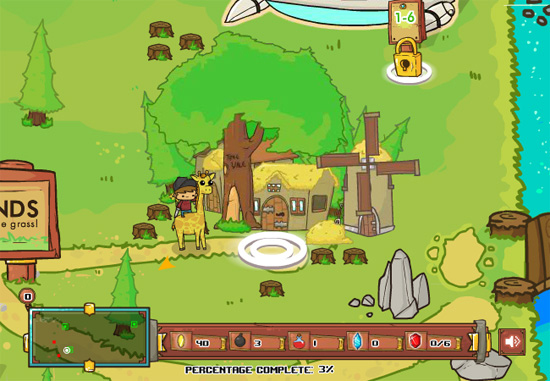
The townspeople were not something we discussed either. Julian basically drew a town full of crazy characters and let me handle the script. We didn’t talk about the missions either. It was quite a nice way of trying to surprise each other. He would draw this wonderful town over a period of a couple of days and I would develop the story and personalities to fill that place. I really feel that it would not have worked as well had we planned out each character. There was a freedom to it, and a sense of improvisation that really fed into the atmosphere of the game. The ‘fetch’ quests were also a side note, and designed to give people a reason to go out to the levels aside from getting the rubies.
As for the bosses, they were originally going to be based around the theme to each level. We wanted to have a candy land area, and the Wild West was originally going to be more of a ‘pyramid desert’ theme but like so many other things, these ideas slowly drifted into something else. In the end we went with the fish robot, the giant jellyfish, a metallic spider and of course Mr B himself.
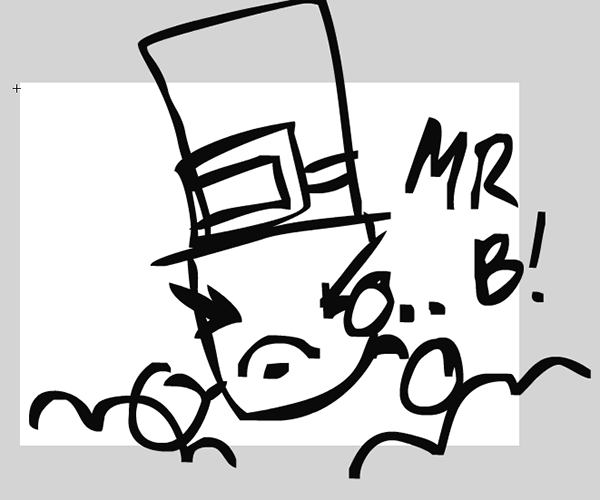

It was important for us that the bosses be as large as possible for maximum ‘epic’. We also wanted each to be a little different, which is why you get a horizontal shooter for the second boss, and the moving in the mineshaft. I think they gave a welcome break from the sword fighting and platforming of the usual levels and were a source of enjoyment for us during development. It fit in really well with our ‘anything goes’ ethos.
Bringing It Together
The thing that really concerned me was how we would tie all these different elements together. There was a long period in which we were just adding different things to the game with no idea how we could create a common thread with which to bring them all together.
That all changed when we began to design the world map. It was clear that to have any form of progression, parts of the areas would need to be inaccessible until you fulfilled some kind of criteria. It was a natural progression from here to create some form of collectible or currency, which you could get at the end of each level set. Rubies seemed to fit nicely in to this requirement.
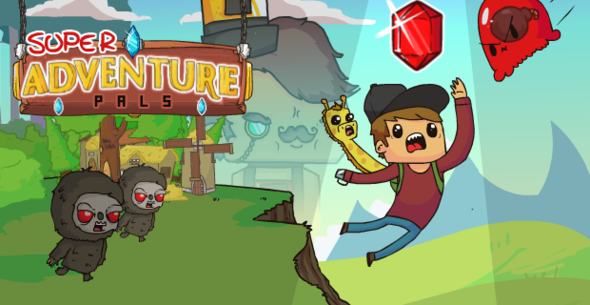
Once we had this, we added the towns and made the bosses only available once you had completed all the levels in the area. Having this form of structure was vitally important to us; we needed to have goals that players could be striving for from second to second, minute to minute and hour to hour. The first layer would be whatever they were faced with in the level, the second would be the desire to collect rubies with which to open the gates and the third would be defeating Mr B and retrieving your pet rock.
I believe that this layer cake approach really kept players engaged for much longer than if all they were doing was trying to complete a numbered list of levels.
Regrets
With Super Adventure Pals we had a very open-ended cycle. We basically knew we wanted to create something wacky, something fun and with a few interesting mechanic ideas. We had a whole bunch of ideas – like what if you could control both the kid and the giraffe simultaneously? – things that just didn’t quite fit in the end. This open-ended approach was both a blessing and a curse. It gave us full creative freedom, but meant that it took much, much, much longer than it should have done.
What Next?
We have decided that we will be making a sequel, and we will certainly be learning from our previous mistakes. This time of course we have a lot of advantages – we know what we are making right from the start, we know the structure, we know the feel and we know all the different elements that make up the game. This time around we are going to make a more polished, tighter and enjoyable game and do it in half the time it took to make the first… well, that’s the plan anyway!
